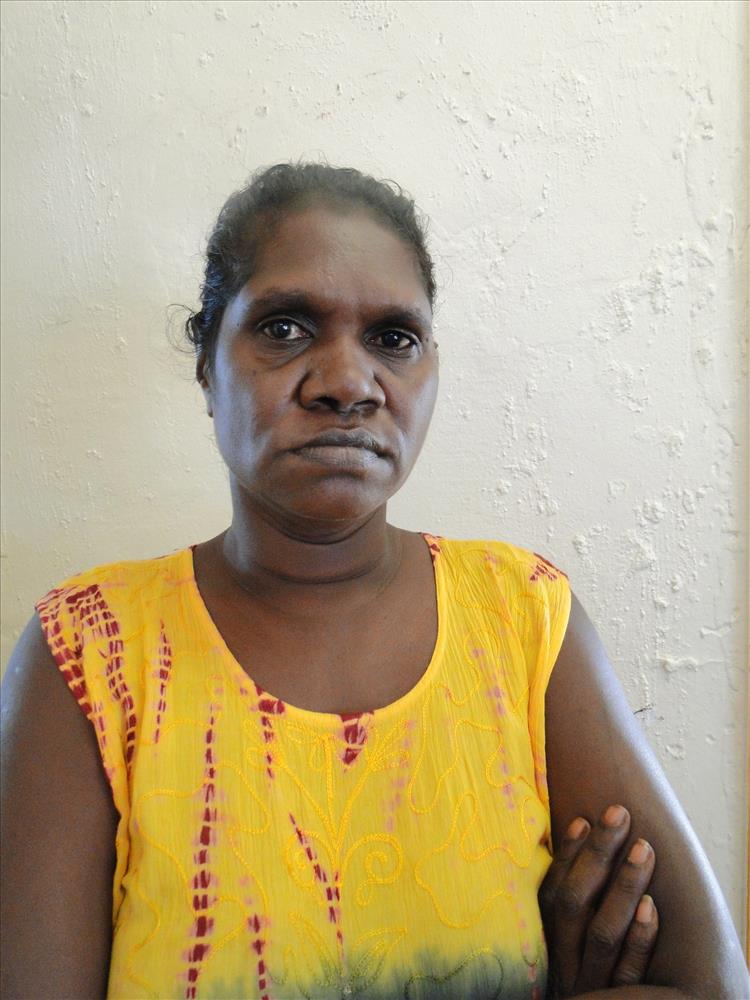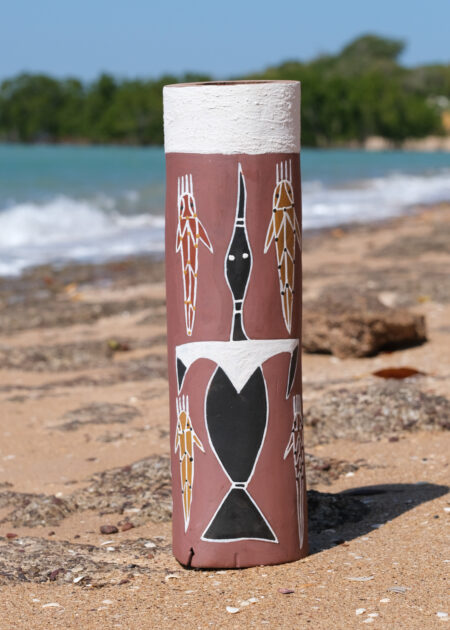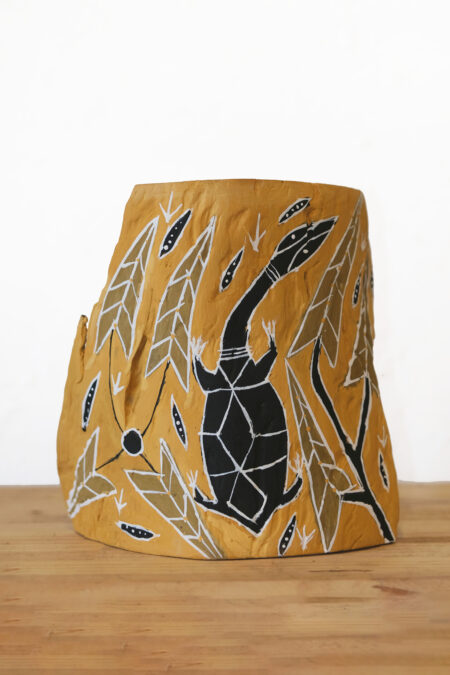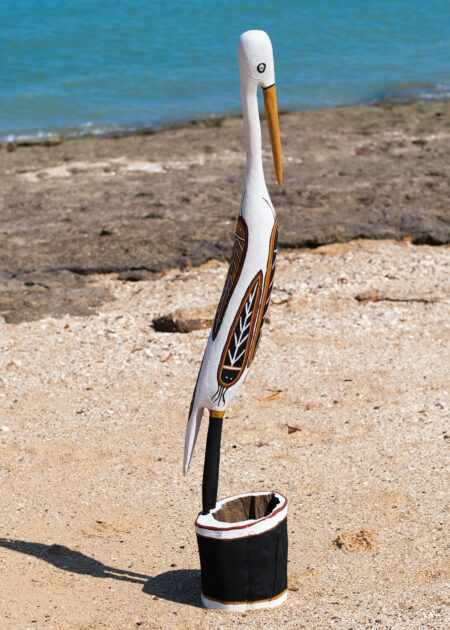Description
Traditionally these designs were only painted by men, however, before his death, the responsibility to paint and maintain the Garrawurra cultural endowment was passed on to Nalmakarra and her sisters by their father Harry Bäriya, and by their brother Micky Dorrng.
The ancestral Djaŋ’kawu Sisters are travelling from the RYirratjiŋu country at Yalaŋbarra on the East Arnhem Land mainland, to the Djapu clan lands further south, where they sing with biḻma (clapsticks) and yiḏaki (didgeridoo). They then travel west, first to the Ḏäṯiwuy clan lands and then on to Gärriyak, south of Galiwin’ku (Elcho Island). We [the Garrawurra people] sing two songs about them with biḻma. They aren’t really songs, they are stories.
Wherever they stopped, the Djaŋ’kawu Sisters changed their language, names, clan, ceremony and customs. They gave these things to the people at each place. They also made Gapu Milminydjarrk or Milngurr (water holes) by poking their dhoṉa (digging sticks) into the ground. Some of these waters are sacred but some are alright to drink from.
The Sisters gave miku (red), watharr (white) and buthalak (yellow) ochre colours for us to paint with. We use them for the Ŋärra law ceremony, which is a cleansing ceremony. These designs also refer to our clan totem animals, Nyoka (crab), Weḏu (freshwater catfish), Buwaṯa (Bush Turkey), Ŋaṯili (Red-tailed Black Cockatoo), Worrutj (Red-collared lorikeet) and Djirriḏiḏi (Forest Kingfisher. The colours as used in these designs are themselves generally referred to as Djirriḏiḏi or as Weḏu.
Djirriḏiḏi, these red, white and yellow striped designs, are painted on participants at Ŋärra (cleansing ceremony), Bäpurru (funeral) for Dhuwa people, and at Dhapi (initiation ceremony). Garrawurra artists create many variations of this geometric design, representing the progressive stages of ceremony. Some artworks contain large fields of miku or ratjpa (both red), which denote the body being prepared to be painted.
Large areas of watharr (white clay) at the top and bottom of a work represent the painted face in the final stages of the Ŋärra or Bäpurru ceremonies, associated with the Buwaṯa (Bush Turkey) totem. In a particular variation of this, appearing as a ‘keyhole’ design, the white area is given borders of miku and buthalak (red and yellow ochre). This is applied to the back and chest of only senior people.
A single diagonal stripe is worn by men and boys who have been initiated in Dhapi and is worn only during the Ŋärra ceremony. A second intersecting stripe is added in the final stages of the ceremony, for the buku-ḻup (cleansing). The painting of this cross, known as gurriri gurkmirr, signifies a return to the Garrawurra clan homeland, Gärriyak.




